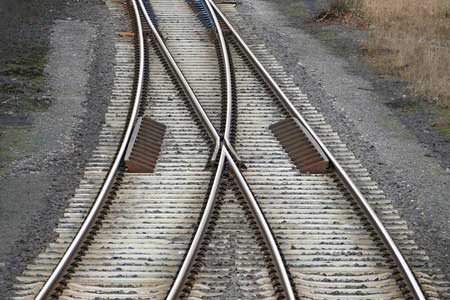
Less than a week after the good news that Carlisle station is to get a £14.7m upgrade the rail network in the north, and particularly Carlisle has suffered at the hands of Storm Desmond. Stations have no power and long stretches of track are under water causing travel chaos.
Whilst Network Rail are promising to get things back up and running as soon as humanly possible, the safety of rail passengers has to be at the forefront of everything being done. So whilst in an ideal world commuters would love to back to normal as soon as possible, there is much more to getting back to normal than just the water receding. Network Rail’s crews of maintenance people (known as the Orange Army) are clearing fallen trees and landslip debris where they can (read more here), but it’s not just what’s fallen onto the tracks that is the issue.
What damage is done when there is flooding on the rail network?
There are the obvious things mentioned above; trees, rocks and landslip debris on the tracks that need to be cleared. To the average person, those things in addition to the water are what we see and expect to be cleared before we can jump back onto the train. But dig a little deeper and you soon see that there are a whole host of issues, including serious safety considerations that need to be considered before declaring that a line is safe for use again following a flood.
The ballast on railway lines has a number of functions. It keeps sleepers in place, which in turn hold the rails at the correct position and angles. It also helps provide drainage on track formations. If flood water is flowing then the ballast can become dislodged or washed away, destabilising the track and possibly resulting in derailment. Wherever tracks have been submerged, the ballast has to be extremely carefully checked to ensure the safety of future travellers on the line.
Electrified tracks. It goes without saying that once rails become submerged, these sections of track cannot be used and electricity has to be turned off. Again, rigorous checks and testing needs to be carried out once the water has subsided. Movement in tracks due to shifting of ballast can cause disruption in connections.
Railway signals are run on power and data cables between signalling cabinets, relay rooms and signals. Water in these systems can cause severe disruption and safety issues. Protection and warning systems are also run from grids in the tracks. Where there is severe flooding, it is highly likely that some of these signal boxes and systems will need rebuilding. Extensive testing is required to ensure that there are no breaks in these systems.
In as many cases as possible tracks will be repaired and services will resume, but where flooding has been heavy or persistent it’s highly likely that complex electrical systems will take time to get back up and running.
The disruption to our daily work lives and travel may well be frustrating when the rail network has problems, but I think we’d all agree that extra week on bus services is worth it if it guarantees our safety when the trains get back up and running.
PRV Engineering are a provider of busbars and trackside electrical components to the rail industry, as well as providing components to low, medium and high voltage industries.
This site uses Akismet to reduce spam. Learn how your comment data is processed.


 Mail:
Mail: 




Leave a Comments